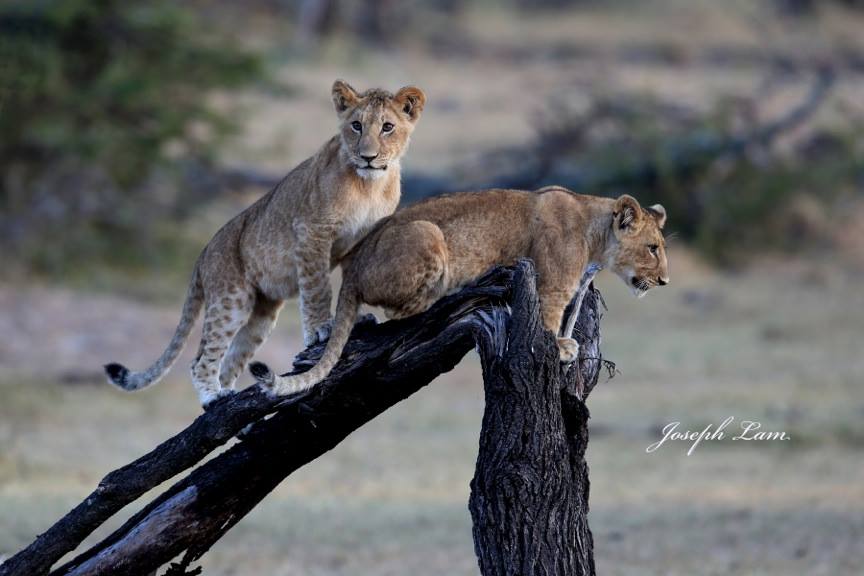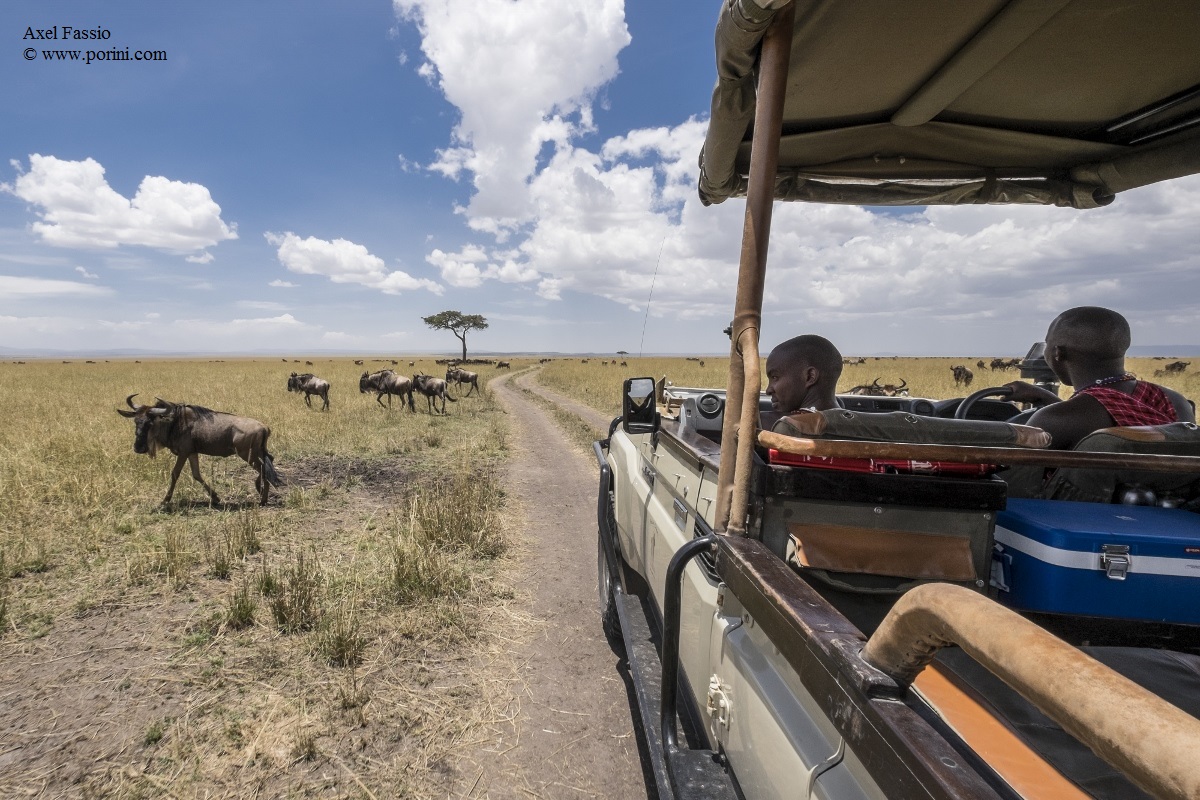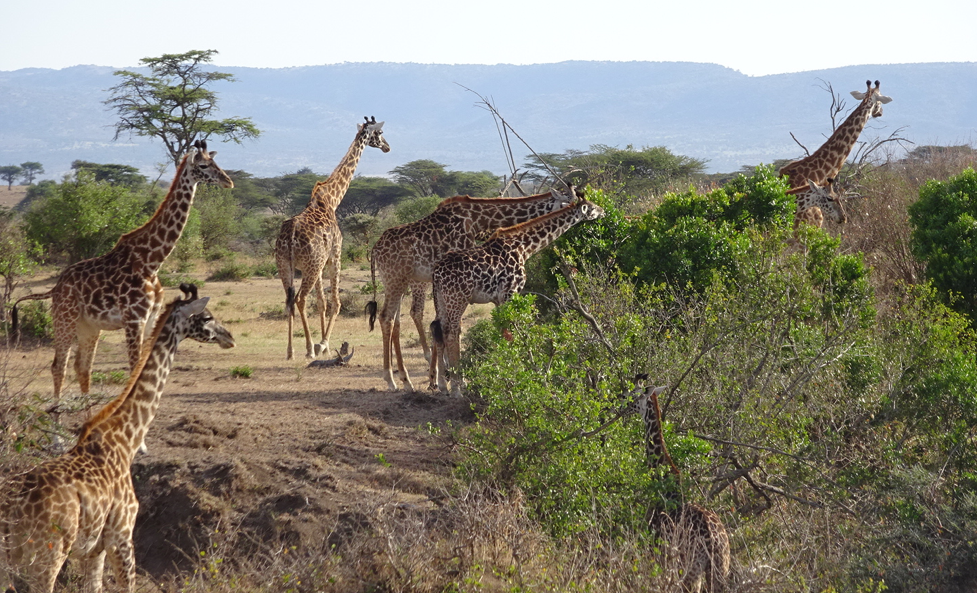
Earlier this year we hosted some wildlife biologists at Porini Mara Camp to enable them to carry out research in Ol Kinyei Conservancy. Their 18 day project was a “giraffe census” – a mission to identify / document the individuals within Ol Kinyei – and the findings were very interesting …
Giraffe populations are in serious decline across their former rangelands owing to habitat loss and poaching.
The Maasai giraffe (Giraffa tippelkirchi) was previously the most common but numbers have declined by 50% in the last 30 years and there are serious concerns that it is disappearing in many places owing to increased human settlement, farming and fencing which deprives it of space in which to live.
The Conservancies adjacent to the Masai Mara Reserve play a vital role in providing protected habitat where giraffes can survive.
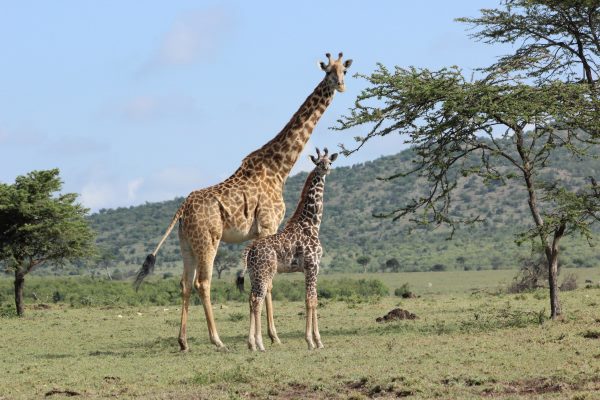
Dr Petra Campbell and Dr Felix Patton are wildlife biologists with extensive experience in ecological monitoring of wildlife species in Africa. With Porini Mara Camp as their base, in January 2019 they spent over 2 weeks photographing every individual giraffe in Ol Kinyei Conservancy to build up a research database of the giraffe population in the Mara identifying each giraffe. Previously they have completed a similar exercise in Naboisho and Olarro Conservancies in the Masai Mara ecosystem.
They found a total of 539 different individuals in Ol Kinyei Conservancy over the period that they were there and estimated that at least 300 giraffe are in the Ol Kinyei Conservancy at any one time.
The research also shows that some of the giraffes move over a large area – in fact the one pictured below had visited all 3 of the conservancies in the Mara supported by our Porini Camps: the Ol Kinyei, Naboisho and Olare Motorogi conservancies.

Dr Felix Patton described their activities while at Ol Kinyei:
“We make an early start at 7 am (it’s too dark to take good ID photos earlier than that) to catch those giraffe which move away before the main groups. Some of the going is tough having to weave between the many thorny Acacia drepanolobium so as not to scratch the car too badly while getting in position to take a right side photo before the giraffe turns away or runs off. Then back to camp to download all the photos, crop them on the computer to get a full length photo for the ID database and a body photo for the computerised identification system.
It is not all work as we come across all sorts of wonderful wildlife sightings. Today on Ol Kinyei, we found two lionesses with three small cubs and 2 larger ones right next to a giraffe group followed closely by four beautifully tusked male elephants walking across the road. And Porini are great hosts allowing us the use of one of their high class tourist tents and the chance to dine and interact with their clients.
Education is an important part of our conservation effort and we have been able to interact with both clients and staff to push the giraffe agenda. The rangers in the field who have helped us, have attended a bush-based training session on giraffe conservation and behaviour which has been well received.”

The researchers at camp with some of the Ol Kinyei Conservancy rangers
Dr Petra Campbell’s report includes the following observations:
During the 16-day period 539 different individuals were sighted in the Conservancy area.
There is definite movement in and out of the Conservancy indicated by the large number of giraffe sighted only once and the large number of new giraffe seen even after the first week of the census.
With this being the third survey carried out in the Masai Mara area, the individuals in Ol Kinyei were compared with the giraffe sighted in Naboisho and Olarro Conservancies and it was found, that 120 (27 males and 93 females) giraffe had originally been seen in Naboisho, while 40 (22 males and 18 females) were first seen in Olarro Conservancy.
Some 8 giraffe (3 males and 5 females) had even travelled from Naboisho to Olarro and were now observed in Ol Kinyei. Two exemplary journeys are shown below.
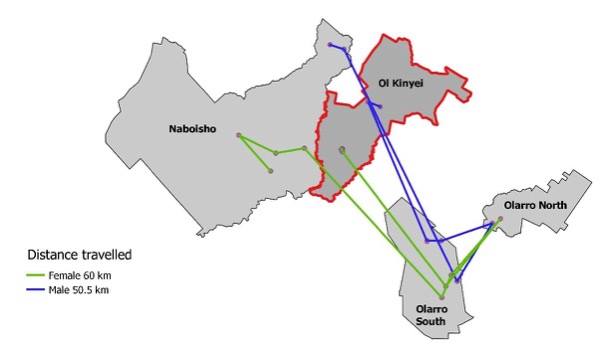
Both started their observed journey in Naboisho, spent time in Olarro North and South and were now seen in Ol Kinyei. If they had walked in a straight line between sightings these two would have travelled at least 60 km and 50.5 km respectively but in any case, they would have needed to twice cross the main access road into the Masai Mara National Reserve which runs between Ol Kinyei and Olarro!
Out of the total of 1397 separate sightings, 539 different individuals were identified.
On average, 87 giraffe were observed per day and the group size varied between 1 and 61.
The northern and southern areas of Ol Kinyei Conservancy were equally favoured by giraffe, however, the highest density of observations was found in the central part of the conservancy (map below).
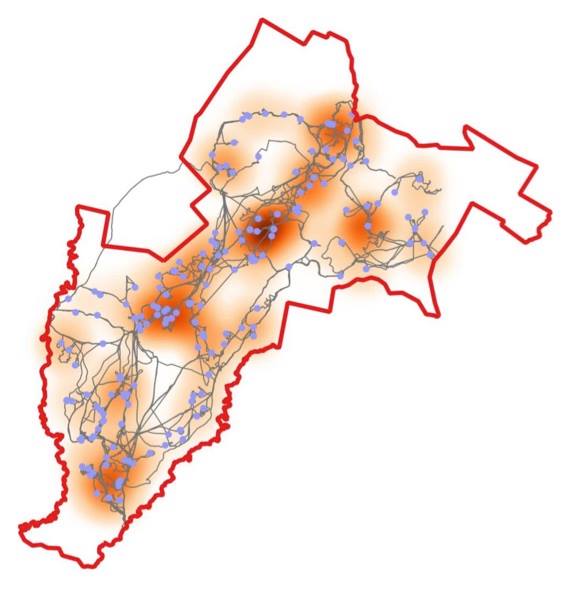
The largest number of giraffe found on consecutive days was 300. Therefore it is fair to say that at least 300 giraffe can be found in Ol Kinyei at any one time.
Find out more:
• Ol Kinyei Conservancy
• Olare Motorogi Conservancy
on Thursday 07th March 2019 at 11:50




